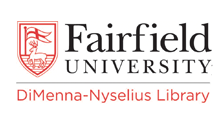Superior–Subordinate Aggressive Communication Among Catholic Priests and Sisters in the United States
Document Type
Article
Publication Date
2-2020
Abstract
The Roman Catholic Church is one of the world’s largest and oldest organizations, yet communication among its members serving in ecclesiastical occupations (e.g., priests) remains relatively unexplored. The present study addresses this paucity of research by examining the relationship between 145 U.S. priests’ and sisters’ perceptions of their religious superiors’ aggressive communication and perceptions of the superiors’ credibility, as well as their own experiences of job and vocational satisfaction, motivation, and organizational commitment. Results indicated that superior verbal aggressiveness was associated with priests’ and sisters’ job motivation, organizational commitment, and perceptions of superior credibility, whereas superior argumentativeness only predicted perceptions of superior competence. The pattern of findings also suggests that superior aggressive communication functions differently across the ecclesiastical occupations studied, with diocesan priests appearing to be most influenced by their superiors’ aggressive communication and sisters seemingly the least influenced. Implications for management and organizational communication research and the Catholic Church are discussed.
Publication Title
Management Communication Quarterly
Repository Citation
Chory, Rebecca M.; Horan, Sean M.; and Raposo, Peter JC, "Superior–Subordinate Aggressive Communication Among Catholic Priests and Sisters in the United States" (2020). Communication Faculty Publications. 61.
https://digitalcommons.fairfield.edu/communications-facultypubs/61
Published Citation
Chory, Rebecca M., Sean M. Horan, and Peter J. C. Raposo. “Superior–Subordinate Aggressive Communication Among Catholic Priests and Sisters in the United States.” Management Communication Quarterly 34, no. 1 (February 2020): 3–31. doi:10.1177/0893318919879935.
DOI
10.1177/0893318919879935
Peer Reviewed


Comments
Copyright © 2019, © SAGE Publications
A link to full text has been provided for authorized subscribers.